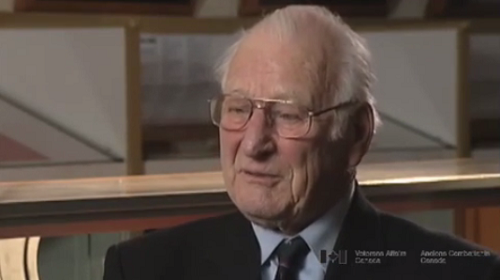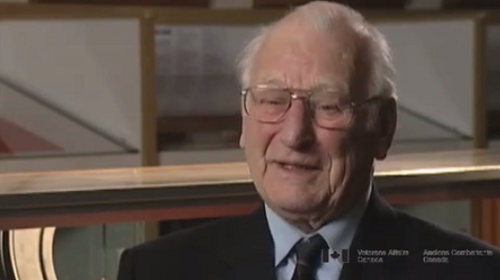Advancement and Team Strategy
Heroes Remember
Advancement and Team Strategy
Transcript
For a long time you're a number two, you fly behind another one and then you move up
into leader of a section and then finally into leading the flight so there's three or four steps.
They watch you carefully and they think when it's time for a move,
just like going to school, you move up a grade.
Flying is much like a football team. You have your quarterback,
you have your fullback, you got a couple of good receivers,
the solid line that does all the work and that's what really happens up in the air too.
You have a team, you have to fight as a team and you dare not break formation
unless you're told to by your leader so it's a very disciplined type of flying.
If you break off, and we saw many occasions a guy says,
“I see something below, I'm going after him,”
he goes after him there is a 109 on his tail in no time at all.
A lot of these are decoys.
You'd talk to these fellows but they just had the urge to go, and they did.
Description
Mr. Wilson discusses advancing one’s position in a flight’s hierarchy, and the discipline required to maintain a flight’s safety while on patrol.
Gordon Wilson
Gordon Wilson was born on December 5, 1917 in Limerick, Saskatchewan. The Royal Canadian Air Force was no longer accepting recruits when he enlisted so he joined the Royal Regina Rifles. Six months later, Mr. Wilson joined the Royal Canadian Air Force at Brandon, Manitoba. His first wartime deployment saw him serving in North Africa near El Alamein, where he initially flew Hurricanes in a Royal Air Force squadron. He later piloted Spitfire 9’s in Sicily, Italy and the Middle East. After the war, Mr. Wilson completed a university degree and became a museum curator.
Meta Data
- Medium:
- Video
- Owner:
- Veterans Affairs Canada
- Duration:
- 1:36
- Person Interviewed:
- Gordon Wilson
- War, Conflict or Mission:
- Second World War
- Branch:
- Air Force
- Rank:
- Flying Officer
- Occupation:
- Pilot
Related Videos
- Date modified:















